A new generation of Japanese popular culture
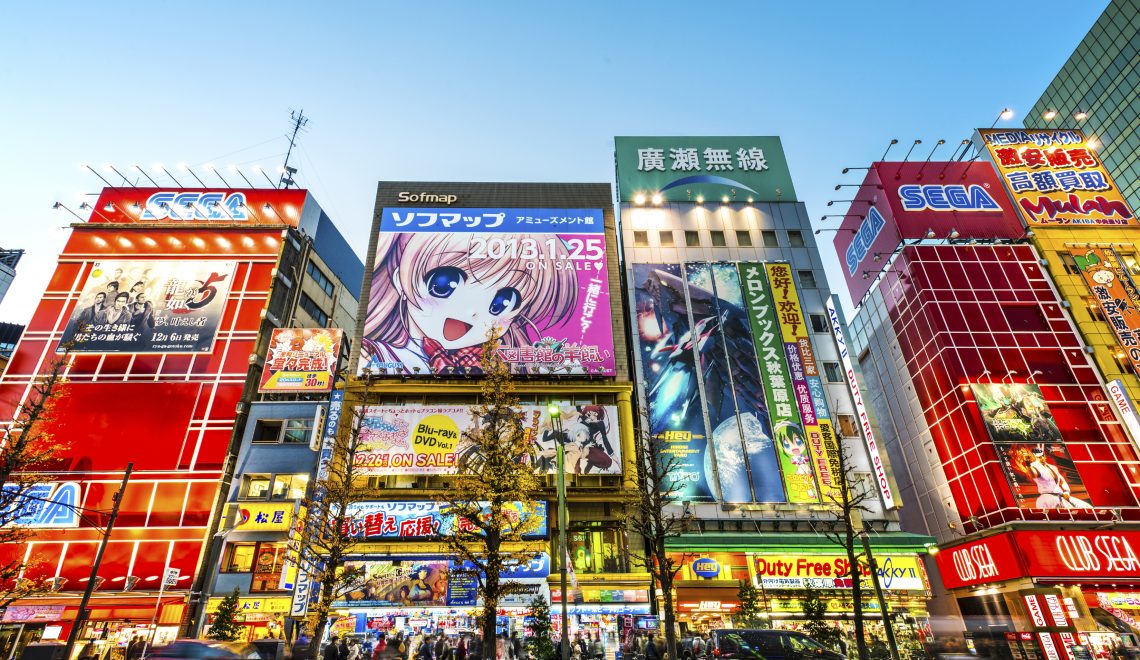
Influence of technology on the evolution of Japanese Popular Culture
Anime, manga and videogames are transnational industries that, although inseparable from other media associated with Japanese popular culture, have managed to attract highly diverse global audiences.
But what can we accept as Japanese popular culture?
To define this, it is best that we take a look at the Japanese wording for this term. 'Popular culture' has two Japanese translations: taishu bunka (大衆文化 mass culture) and minshu bunka (民衆文化 popular culture). However, the expression minshu bunka is not as popular as taishu bunka anymore in Japan today, so 'popular culture' is usually translated into taishu bunka. This means that in the Japanese context 'popular culture' has been absorbed by 'mass culture'. 1
The first wave of Japanese popular culture exports started in the second half of the twentieth century with the rise of Japanese movies, anime, manga and television. Because of this first wave, overseas interest in Japanese popular culture increased. The advancement in technology and the digitalization of media gave rise to a second wave of Japanese popular culture. The innovation of faster communication, a globalizing world and new technology developments have contributed to platforms on which Japanese popular culture can be presented in new ways. 2
However, when asked about Japanese popular culture, the first thing that comes to mind is probably manga and anime.
But how did these forms of popular culture develop in Japan?
Manga had only really become popular in Japan in the course of the 20th century. In 1902, the first Japanese comic series appeared, authored by Rakuten Kitazawa. Meanwhile, the comics were also included in monthly magazines, such as Shōnen Club.
In the years after the Second World War, the popularity of comics increased due to the influence of the American occupation. While the leisure market was growing rapidly, the demand for comic books rose drastically. People born during the ‘baby boom’ of 1947-1949 were the main buyers of these comic books. As time progressed the readers became older and different types of manga were created. 3
During the 50s, movies were the most important form of popular entertainment in Japan. The 1950 released movie ‘Rashomon’ by Kurosawa Akira caught international attention by winning an award at the Venice Film Festival (in 1951). In 1957, Toei Animation, which produced only anime movies, was the largest film producer in Japan. 3 This period also saw the rise of the world famous manga series ‘Astro Boy’ by Tezuka Osamu , of which the original manga started in 1952. 4
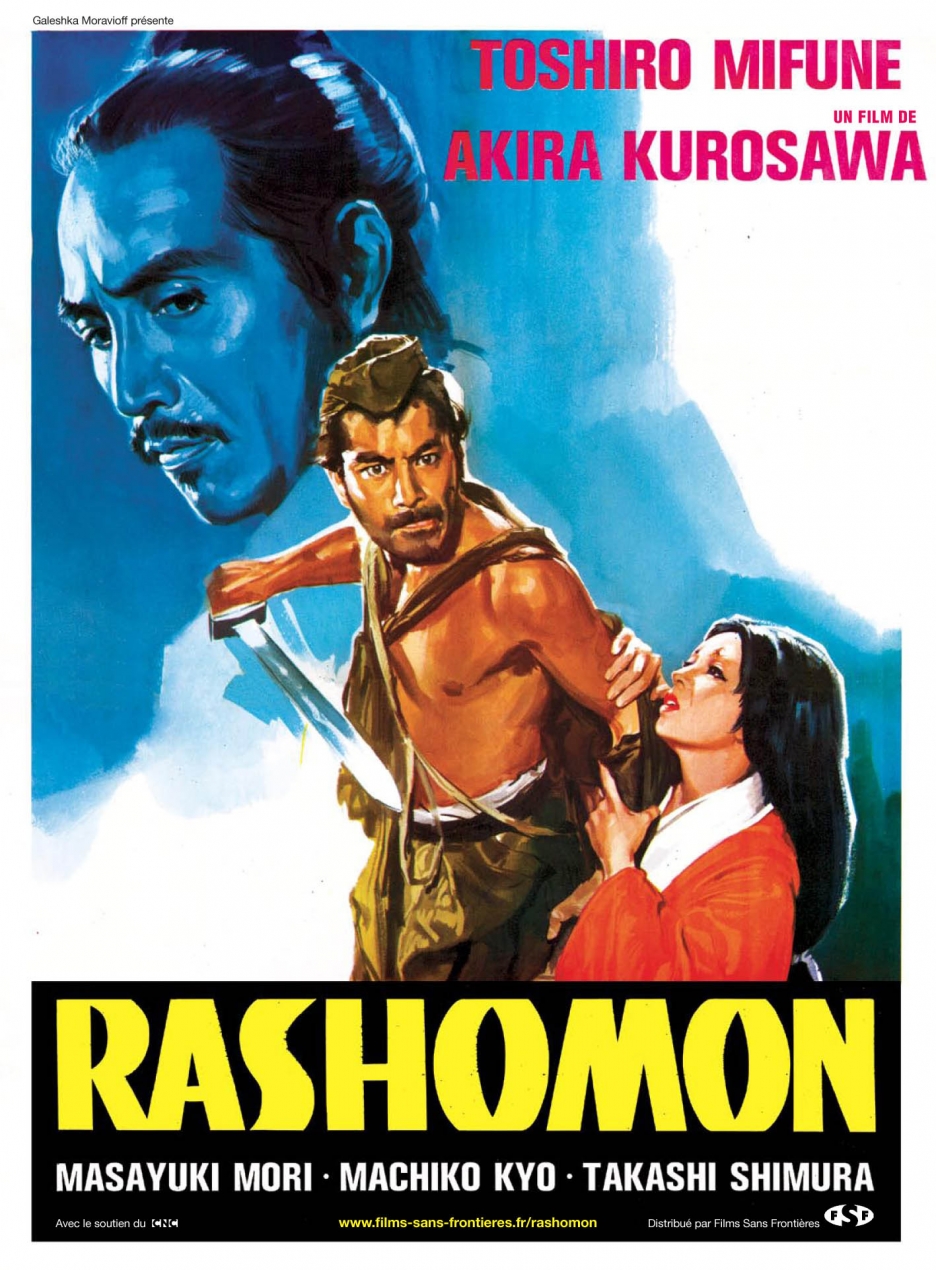
The 1960’s saw a growth in Japan’s economy, resulting in a more spendable income. Manga had developed in a way that all age groups were reading it. Tokyo became the publishing capital of manga, accounting for 33.8% of all books and magazines which were sold in Japan. 3
A huge importance to the establishment of manga culture as we know it today is the appearance of Shōnen Magazine and Shōnen Sunday in 1959. Both these magazines were hugely influential in the manga world by publishing various captivating and popular stories. 3
In regards to movies, a lot changed in the 60s. Many people bought their first television and therefore stopped going to the cinema. This resulted in a massive drop in movie attendance. It dropped from an all time high of 1.1 billion in 1958 to merely 246 million in 1970.
Due to technological innovation, such as the introduction of television and radio, manga also made a pathway for a new form of entertainment called ‘anime’, which are animated series based on manga. Nowadays, in-person fan gatherings such as anime conventions (cons) are extremely popular. This will be discussed further in the quantitative part of our research. 5
In 1963, the first ‘Astroboy’ series was produced. This 193-episodes-long anime series was the first Japanese television show to adopt the aesthetics that would later become the standard for the anime we see today. 6 Tezuka Osamu’s ‘Astro Boy’ is regarded as one of the pioneers of Japanese anime. 3
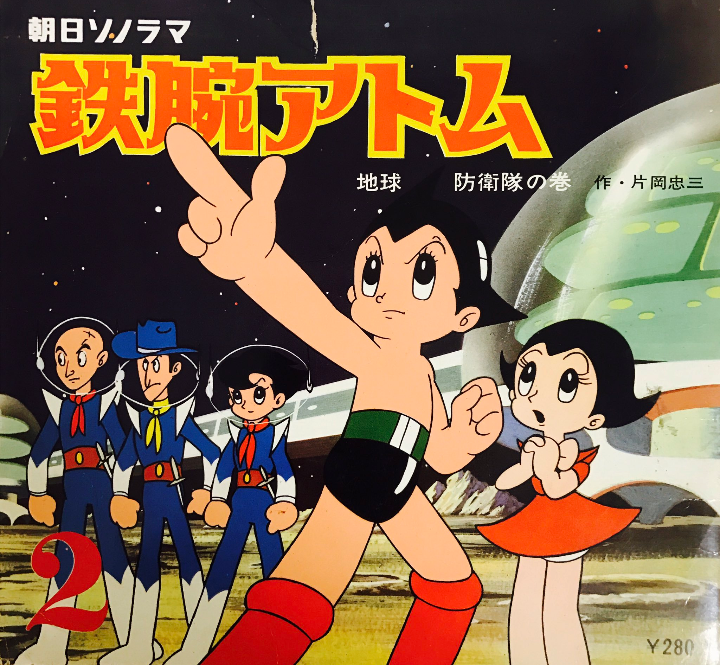
In the 1970s, Yamada Yoji became very popular with his series ‘Torasan’. He fused two basic motives of Japanese cinema together: The everyday life of a family, and the adventures of a lonely wanderer. In 1975, Kurosawa won the Oscar for Best Foreign language film with ‘Dersu Uzala’. This was quite a big deal at the time since it was a major step for Japan in the international movie-industry.3
Another important development for Japan in the aspect of popular culture is the rise of video games. ‘Space Invaders’, which was released in 1978, was the big start of Japan’s rise in this particular field.
In the early 1980’s, a new manga magazine called Shōnen Jump became the center of manga culture. Every week 6 million copies of this popular magazine were produced. However, after some time the sales of pre-publications dropped noticeably. Along with all these problems, an Asian crisis arose. But with Nobuhiro Watsuki's ‘Rurouni Kenshin’, the sales figures went up again. The young author (at that time only 29) was the first to write a real series of about 28 volumes 7 and he was also the first to make a profit from it. Manga had therefore fully recovered from the crisis, and extended manga series were once again bought by the general public.
One can only speak of the success of manga in America and Europe from the 1980s onwards. But this popularity was still rather limited.
During the same time period, anime took something of another turn. Here in the West, we were used to looking at animation in a simple way: something to entertain, not to be taken seriously. In Asia, especially Japan, animation is as important a medium as literature or film. But the arrival of the film 'Akira' brought change to the West. Thanks to this film, manga and anime were suddenly seen as something very 'cool'.
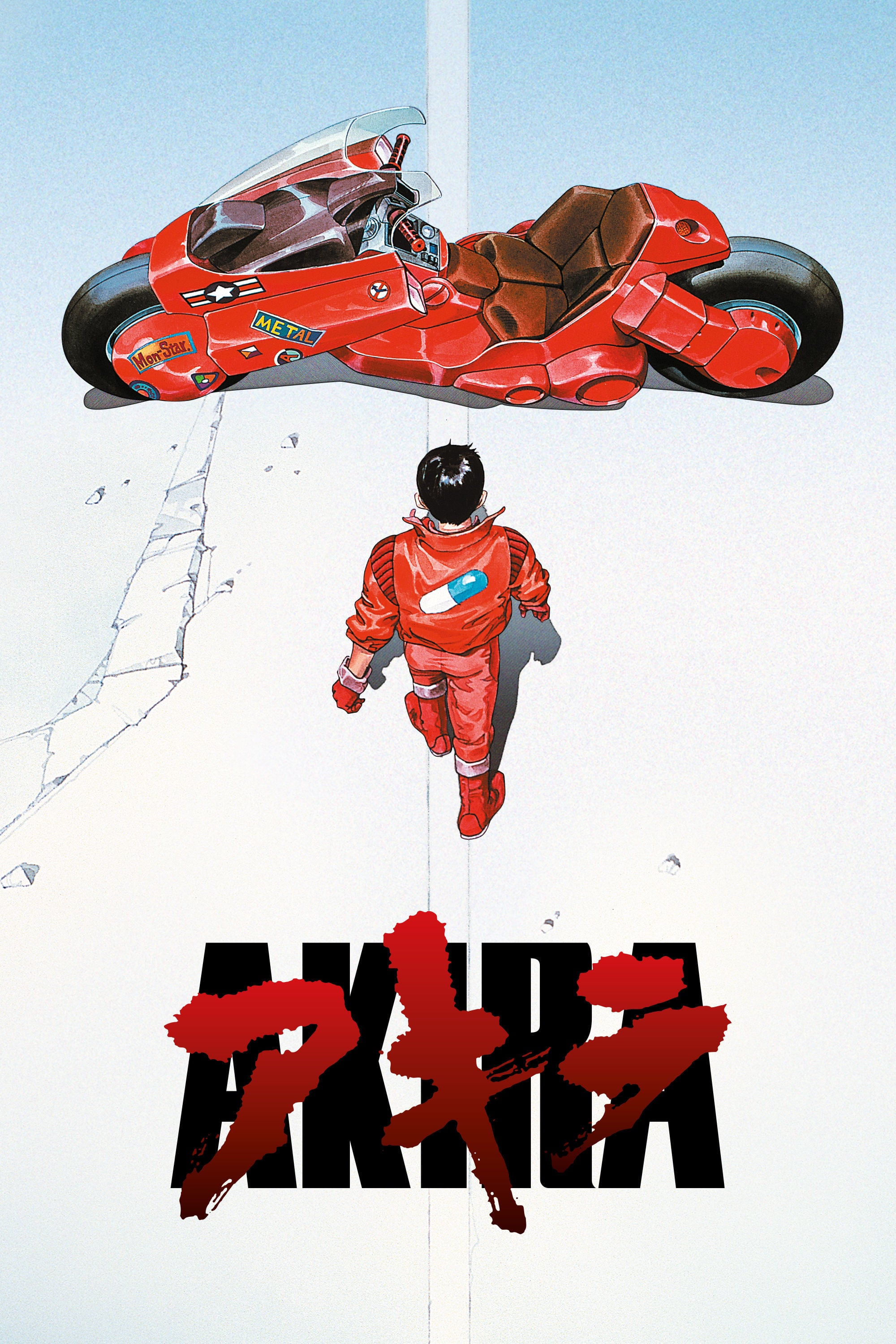 Some of the most popular and long running televised anime series like ‘Doraemon’, ‘Pokemon’ and ‘Crayon Shinchan’, also have incredibly successful standalone movies. Director Miyazaki Hayao has been dominating the standalone anime movie market for more than 2 decades. Some of the movies he directed include ‘Nausicaa of the Valley of the Wind’ (1984), ‘My Neighbor TOTORO’ (1988), ‘The Princess Mononoke’ (1997) and ‘Spirited Away’ (2001). 3
Some of the most popular and long running televised anime series like ‘Doraemon’, ‘Pokemon’ and ‘Crayon Shinchan’, also have incredibly successful standalone movies. Director Miyazaki Hayao has been dominating the standalone anime movie market for more than 2 decades. Some of the movies he directed include ‘Nausicaa of the Valley of the Wind’ (1984), ‘My Neighbor TOTORO’ (1988), ‘The Princess Mononoke’ (1997) and ‘Spirited Away’ (2001). 3
A big change came around in the field of video games too. This happened with the arrival of ‘Pac-Man’ in 1980. The franchise is seen as important and influential, and is often used as a representation of 1980's popular culture and video games as a whole.3
Not much later in 1982, video games found their way into the homes of the Japanese people by the first sales of game systems like Nintendo. This changed the entire gaming culture. The games that previously could only be played at the arcades could now be enjoyed from the comfort of your own home. Video games became popular fairly quickly, especially among children.
In the beginning of the 90s, the popularity of manga increased a lot in the West. This was largely influenced by the airing of popular anime shows like ‘Dragon Ball’ and ‘Yu-gi-Oh!’.
This resulted in a major increase in the export of manga, especially towards Europe and the United States. 3
The international attention towards Japanese non-animated movies grew a lot in 1997, when the movie ‘HANA BI’ directed by Kitano Takeshi won an award at the Venice International Film festival. This award was the start of many for the Japanese films. In the same year ‘Unagi the Eel’ by Imamura Shohei won a Palm dÓr award at the Film Festival in Cannes. 3
A perfect example of Japanese culture that captured the hearts of children worldwide was the 1996 Japanese video game release of Pokemon. The release of the game was the start of the Pokemon global phenomenon that expanded into an animated series, trading cards and several feature length movies, which is why practically everyone knows it today. 8
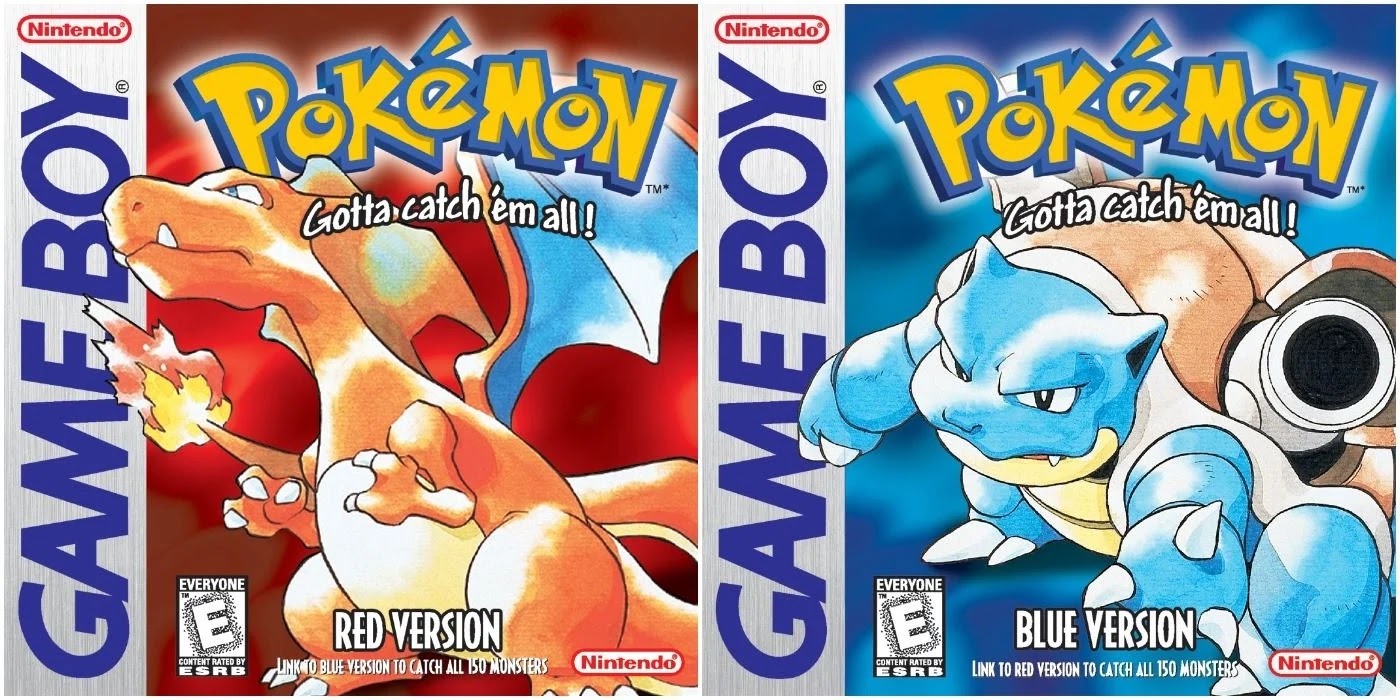 With the start of the 21st century, lots of technological innovations arrived in people’s everyday lives. In 2001, Japan was the first country where third generation mobile phones appeared on the market. It then became possible for publishers to issue subscriptions, allowing readers to obtain Shōnen Jump directly on their portable devices. This development could be considered as the first step towards the webtoons and web manga we know today.
With the start of the 21st century, lots of technological innovations arrived in people’s everyday lives. In 2001, Japan was the first country where third generation mobile phones appeared on the market. It then became possible for publishers to issue subscriptions, allowing readers to obtain Shōnen Jump directly on their portable devices. This development could be considered as the first step towards the webtoons and web manga we know today.
In 2002, a famous Japanese manga publisher started distributing translations of Japanese manga overseas. In 2003 they even started selling a monthly English translation of the famous Shōnen Jump magazine. Good examples of the globalization of manga are the two very famous Shōnen Jump series called ‘Naruto’ and ‘One Piece’. Since 2017, ‘Naruto’ has been republished in book form and distributed in more than 30 countries, while the anime has aired in more than 80 countries. The ‘One Piece’ manga has been distributed in more than 35 countries. 3
In 2003, Ichikawa Jun who directed ‘Tokyo Yakyoku’ was given the Best Director Award at the Montreal World Film Festival. In the same year, ‘Zatoichi’ a historical period film by Kitano Takeshi won several prizes in Venice and the film festival in Toronto. Then in 2009, Japanese movies won 2 awards at the Academy Awards. Takita Yojiro’s ‘Departures’ won the Oscar for Best Foreign Language Film and Kato Kunio’s ‘La Maison En Petits Cubes’ won the award for Best Animated Short. 3
In the past decade we have seen the 2016 released movie ‘Your Name’ by director Shinkai Makoto become an international success. Merely 2 years later Hirokazu Kore-eda’s ‘Shoplifters’ (Manbiki Kazoku) won the Palme dÓr at the Cannes film festival and was nominated for Best Foreign Language Film at the Oscars. 3
In regards to the videogame industry there have also been notable advancements. A good example is the in 2016 released smartphone app called ‘Pokemon Go’. Augmented Reality technology and GPS allowed users to find and catch Pokemon with their smartphones “in the real world”. 9
‘Pokemon Go’ instantly became a worldwide success. The video game industry has grown to become one of Japan’s biggest cultural industries. Nowadays the release of a new game console by either Sony or Nintendo is a huge event, not just in Japan but across the entire world. 3
Quantitative research and visualisation
A globalising world, along with the advancement of technology has given rise to new forms of Japanese popular culture as well as helping Japanese popular culture reach a global audience.
To illustrate the international phenomenon of the rise in Japanese Popular Culture, some statistics have been gathered.
Anime Conventions
A first example is the visualisation of a dataset of anime conventions worldwide, from the years 1975-2021.
‘Conventions’ are (usually) multi-day events or gatherings located in large spaces such as convention halls, hotels, or other such areas, with the primary focus being Japanese Popular Culture. They feature a wide variety of activities, and many attendees even participate in ‘cosplay’: the act of dressing up as the character of a film/anime/etc. At the event, one can procure all kinds of related products: from anime, manga and video-games to merchandise such as posters, pillows and figurines.
As such, this dataset is an ideal representation of the evolution of Japanese Popular Culture around the world.
The dataset was procured from the website, through the ‘ImportHTML()’ function of Google Sheets. It was then downloaded and tidied up using the free data-cleaning software Open Refine. After that, the dataset was opened using Tableau Public, a free software that allows one to create interactive data visualisations for the web. 10
Many different kinds of graphs and charts were constructed, and eventually only the most appropriate ones were assembled into an interactive dashboard.
This Dashboard is available for everyone to see and experiment with:
A Visual Overview of Anime Conventions Worldwide - link Tableau Public
English-licensed Manga
This second example shows the regions in which manga were licensed in English. You can see from the graph that the most manga were licensed in North America. 11
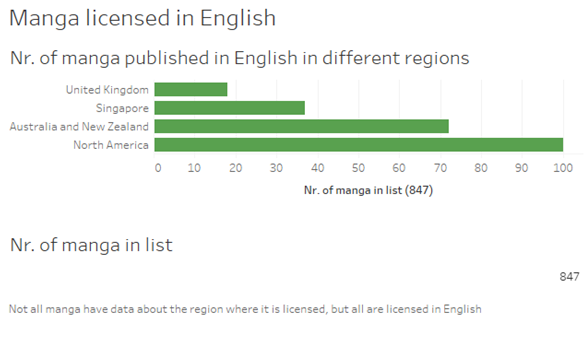 source: List of manga licensed in English
source: List of manga licensed in English
Anime Distribution USA
This example shows the increase of distributed anime in the USA. 12
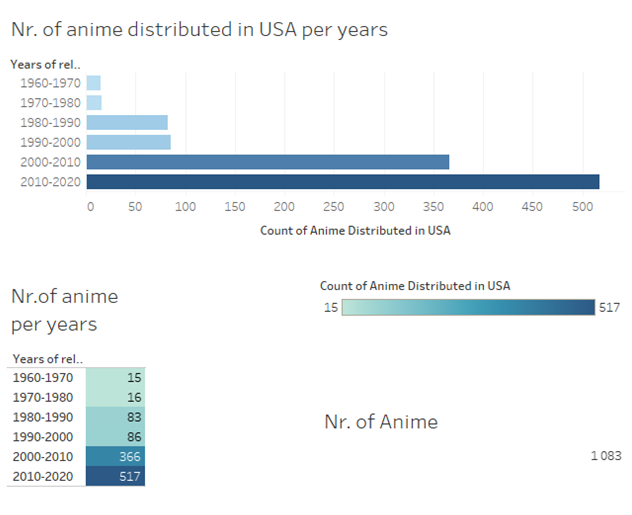 source: List of anime distributed in the United States
source: List of anime distributed in the United States
Japanese Movies
Another example of the increase in popularity can be seen in the following chart, which is based on (quantitative) research done by UNESCO. The chart shows the total amount of Japanese movies exhibited in foreign countries (per year). 13
We can see a rapid increase in exhibited Japanese movies from around 2011 onwards.
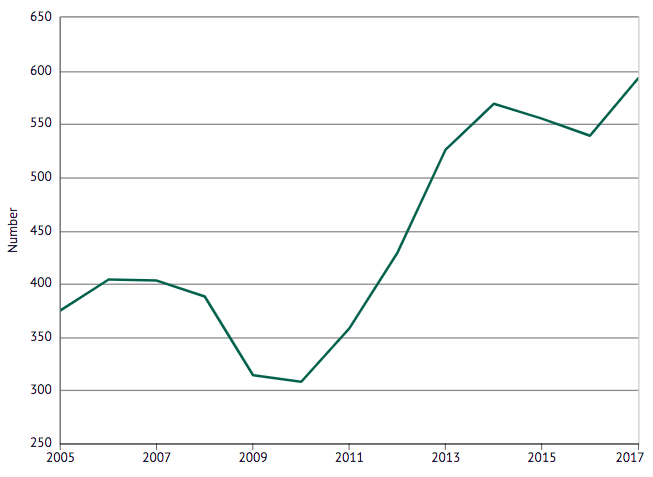 Source: UNESCO Culture Statistics Data
Source: UNESCO Culture Statistics Data
Documentation / Process
Here you can find a log of all the details surrounding the statistics and researches.
Next Generation Japanese Popular Culture
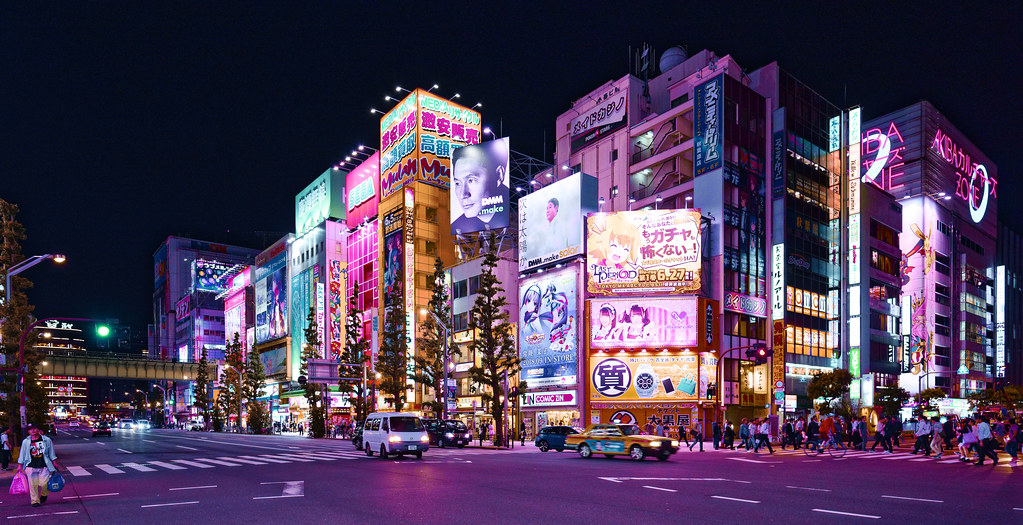 As popular culture is ever evolving, we see new forms of Japanese popular culture rising up in the 21st century through the internet. One might even say that this is a new generation of sorts. To dive deeper into the forms that have developed in the 21st century, certain research has been conducted.
As popular culture is ever evolving, we see new forms of Japanese popular culture rising up in the 21st century through the internet. One might even say that this is a new generation of sorts. To dive deeper into the forms that have developed in the 21st century, certain research has been conducted.
Anime on Twitter
 The 21st century is synonymous to the rise of social media. These outlets have a big global presence, and the use of them makes it easy to spread information across the globe at a remarkable speed.
The 21st century is synonymous to the rise of social media. These outlets have a big global presence, and the use of them makes it easy to spread information across the globe at a remarkable speed.
This makes it interesting to measure popularity of Japanese popular culture on a global scale through the use of social media. Research on this has been conducted with the use of Twitter.
This research aims to analyse the popularity of four specific anime (Pokemon, Nagatoro, Attack on Titan and Demon Slayer) with an emphasis on the global anime-market, the geography and linguistic diversity of Twitter, political influences, controversies and criminological inspiration from Japanese popular culture.
Read Anime on Twitter
Online Learning Communities
 The following research has its focus on online learning communities.
The following research has its focus on online learning communities.
How is Japanese popular culture connected to studying the Japanese language?
Which digital tools are used within online communities to learn languages, specifically Japanese? In this quantitative research, language learning apps have been researched with the use of Quora and the Google Play Store, with the emphasis on people’s interest in Japanese culture and their motivation to learn the Japanese language.
Read Online Learning Communities - Mobilearning
Vtuber? What’s that?
 A very recent form of Japanese popular culture is Vtubers. What is a Vtuber? What are the latest trends regarding Vtubers and what are the advantages and disadvantages of Vtubers? In short, what makes them so popular?
A very recent form of Japanese popular culture is Vtubers. What is a Vtuber? What are the latest trends regarding Vtubers and what are the advantages and disadvantages of Vtubers? In short, what makes them so popular?
The following research answers all those questions. You’ll also be able to view the results of their own Vtuber.
Read Vtuber
VOCALOID
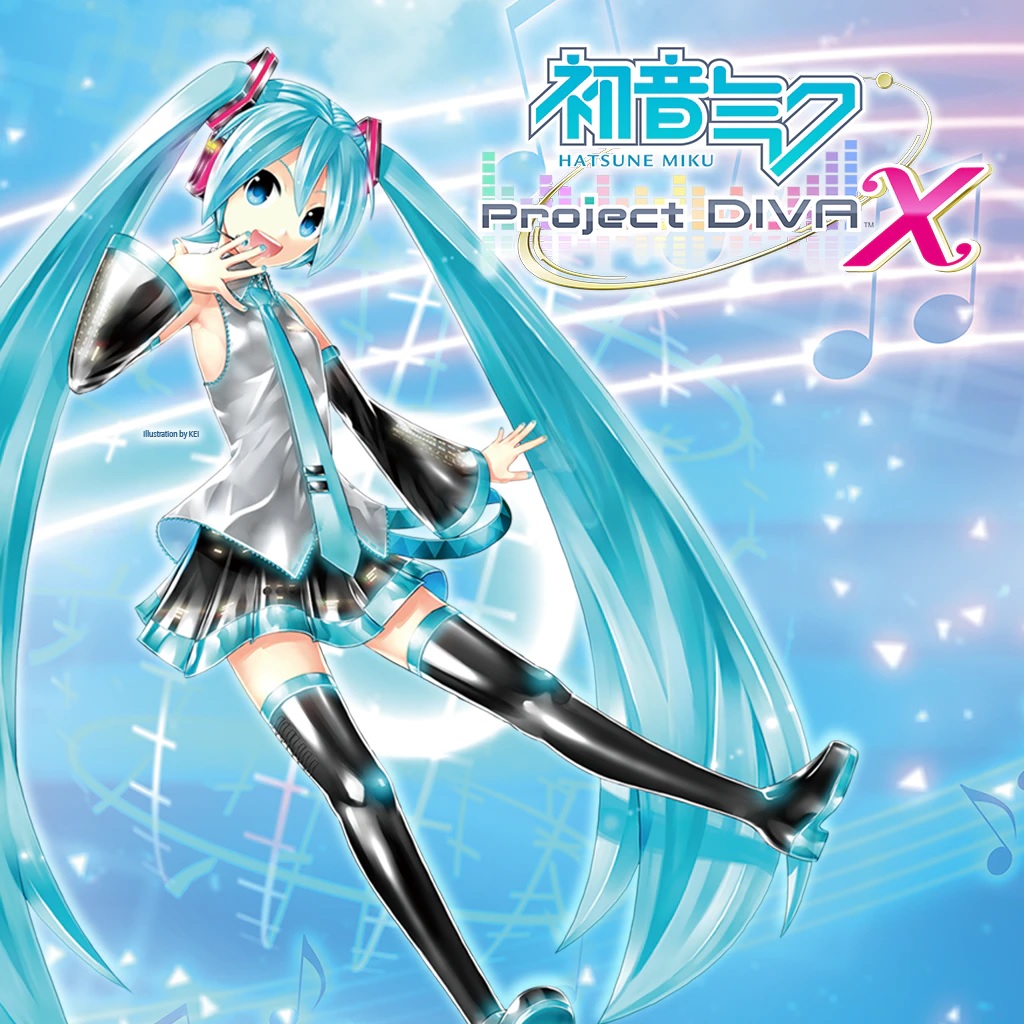 Perhaps you have heard this term being mentioned before by one of your friends or you’ve seen it on social media. VOCALOID artists are a relatively new concept of music and have made their debut with the help of the continuous innovations in technology. For this project, the researchers have even created their own song with the use of VOCALOID software. All the steps towards making such a song will be explained. This way you can find out more about this rising form of music, and also learn how a very popular VOCALOID artist such as Hatsune Miku could acquire more than 1.6 million monthly listeners on Spotify.
Perhaps you have heard this term being mentioned before by one of your friends or you’ve seen it on social media. VOCALOID artists are a relatively new concept of music and have made their debut with the help of the continuous innovations in technology. For this project, the researchers have even created their own song with the use of VOCALOID software. All the steps towards making such a song will be explained. This way you can find out more about this rising form of music, and also learn how a very popular VOCALOID artist such as Hatsune Miku could acquire more than 1.6 million monthly listeners on Spotify.
Read Vocaloid
Image credits
- Akihabara: Unsplash. “Photo by Jezael Melgoza on Unsplash.” Accessed May 18, 2021. https://unsplash.com/photos/6WoJXG_dJAE.
- Rashomon: Pasternack, Jesse. “The Horror and Hope of Rashōmon.” Indiana University Cinema, November 14, 2019. https://blogs.iu.edu/aplaceforfilm/2019/11/14/the-horror-and-hope-of-rashomon/.
- Astroboy: 昭和レインボー. “2月9日は漫画家、アニメ監督 #手塚治虫 先生のご命日です。ご存命なら今年93歳でした。 #リボンの騎士 #鉄腕アトム #ジャングル大帝 #悟空の大冒険 https://t.co/QWGTVII7ei.” Tweet. @ShowaRainbow (blog), February 8, 2021. https://twitter.com/ShowaRainbow/status/1358865461421633539.
- Akira: “Akira (1988).” Accessed May 18, 2021. https://www.imdb.com/title/tt0094625/mediaviewer/rm2245203200/.
- Pokemon: LaptrinhX. ‘Pokemon: 10 Things The Manga Does Better Than The Anime’. LaptrinhX, 25 April 2021. https://laptrinhx.com/pokemon-10-things-the-manga-does-better-than-the-anime-1256085261/.
- Next Gen:
- Unsplash. “Photo by Jezael Melgoza on Unsplash.” Accessed May 18, 2021. https://unsplash.com/photos/alY6_OpdwRQ.
- Unsplash. “Photo by Pat Krupa on Unsplash.” Accessed May 18, 2021. https://unsplash.com/photos/Of2rc0KOfVU.
Sources
-
Tetsuo, Kogawa. ‘New Trends in Japanese Popular Culture’. In The Japanese Trajectory, edited by Gavan McCormack and Yoshio Sugimoto, 1st ed., 54–66. Cambridge University Press, 1988. https://doi.org/10.1017/CBO9780511759666.004. ↩
-
Allen, Matthew, and Rumi Sakamoto. Japanese Popular Culture in the Twentieth Century. Vol. 1. London, UK: Routledge, 2014. http://routledge-ny.com/books/details/9780415827898/. ↩
-
Web Japan. ‘Introduction of Japan - Japan Fact Sheet’. Accessed 10 May 2021. https://web-japan.org/factsheet/en/pdf/e22_popculture.pdf ↩↩↩↩↩↩↩↩↩↩↩↩↩↩
-
Tezuka In English. ‘Tezuka In English’. Accessed 10 May 2021. http://tezukainenglish.com/wp/. ↩
-
Freedman, Alisa, and Toby Slade. 2018. Introducing Japanese Popular Culture. Routledge. ↩
-
‘Astroboy’. In Wikipedia, 31 January 2021. https://nl.wikipedia.org/w/index.php?title=Astroboy&oldid=58211183. ↩
-
‘List of Rurouni Kenshin Chapters’. 2020. In Wikipedia. https://en.wikipedia.org/w/index.php?title=List_of_Rurouni_Kenshin_chapters&oldid=994776501. ↩
-
Kinsella, Sharon. 1998. ‘Japanese Subculture in the 1990s: Otaku and the Amateur Manga Movement’. Journal of Japanese Studies 24 (2): 289–316. https://doi.org/10.2307/133236. ↩
-
‘Pokémon Go’. In Wikipedia, 9 May 2021. https://en.wikipedia.org/w/index.php?title=Pok%C3%A9mon_Go&oldid=1022336408. ↩
-
AnimeCons.com. “AnimeCons.Com - Anime Conventions.” Accessed May 10, 2021. https://animecons.com/. ↩
-
“List of Manga Licensed in English.” In Wikipedia, March 18, 2021. https://en.wikipedia.org/w/index.php?title=List_of_manga_licensed_in_English&oldid=1012760288. ↩
-
“List of Anime Distributed in the United States.” In Wikipedia, April 24, 2021. https://en.wikipedia.org/w/index.php?title=List_of_anime_distributed_in_the_United_States&oldid=1019706677. ↩
-
Knoema. “UNESCO: Culture Statistics Data - Knoema.Com.” Accessed April 26, 2021. https://knoema.com//CEMP_DS_CUL_DS_CTRD_DS/unesco-culture-statistics-data?tsId=1251070. ↩